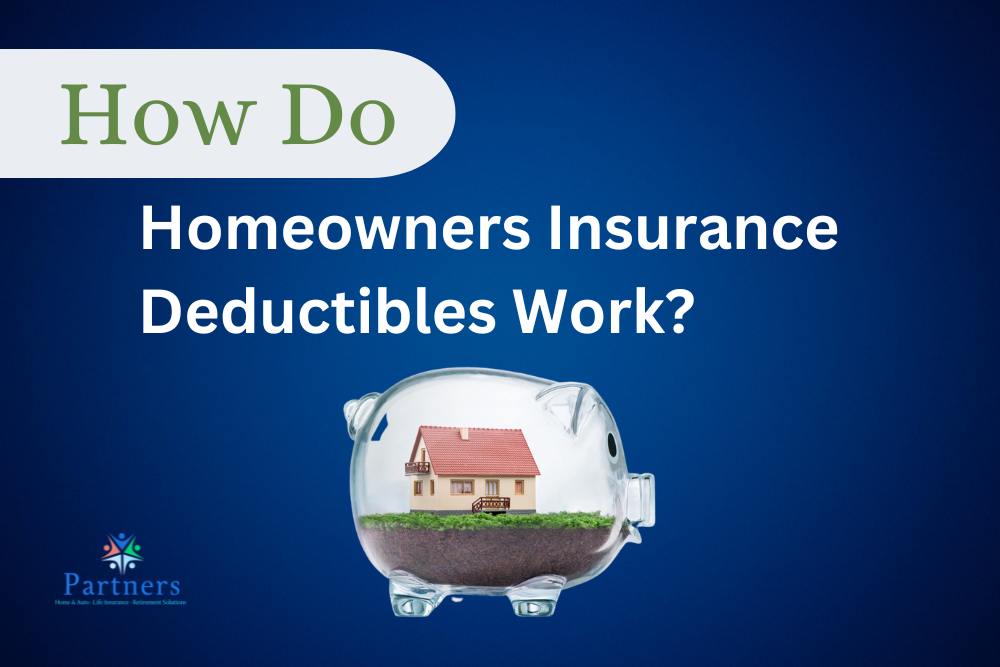
It’s important to understand how your insurance policy works so you can make an informed decision when it comes to choosing the right coverage for your needs. One of the most important aspects of homeowners insurance policies is the deductible. They’re on the rise and we’re going to take a closer look at how homeowners insurance deductibles work, so you can better understand how they impact your coverage and finances.
Updated June, 17 2024
The importance of knowing how homeowners insurance deductibles work
Many homeowners insurance policies have several different deductibles depending on what caused the damage. We talk to people everyday who don’t realize this is the case because it was never explained to them.
If you don’t know what to look for in a policy you may have a nasty surprise down the road. Knowing how much you could be on the hook for is important to protect your personal finances.
Wind and hail deductible
You may have a separate wind and hail deductible which would apply if your home were damaged by either wind or hail. This can be a flat amount or it can be a percentage of the insured amount of your home.
46% of all homeowners covered losses were from wind or hail between 2017 – 2021. With this being such a common claim, you’ll want to be aware of how it works.
The amount you pay out of pocket will depend on your policy, so it’s important to understand what your deductible is and how it works.
Example
If your home is insured for $400,000 and you have a Wind/Hail Deductible of 1%, you would pay $4,000.
400,000 x .01 = $4,000
Earthquake deductible
Earthquake is another type of coverage that will almost always have a separate deductible and is typically a very large amount. You will see anywhere from 5% to 25% offered. Depending on where you’re located in the country, and your specific policy options, you may have earthquake added as an endorsement on your homeowners insurance or it may be a separate stand-alone policy.
It’s not common to see a flat deductible offered for earthquake damage. Generally, it will be a percent of the insured value of the home. We often see 15%.
Example
Again, using our home with a $400,000 insured amount as an example:
400,000 x .15 = $60,000
As you can see this is a very high deductible. Earthquake coverage is really designed to only come into play if there’s a catastrophic event. However, we still think it’s a good idea to add this coverage. Pass the potential big loss to the insurance company rather than self-insuring.
Flood deductible
Technically, this isn’t a homeowners insurance deductible because flood is purchased as a separate policy but we thought it was worth mentioning.
It’s unique because this one coverage consists of two deductibles. One is for the structure of your home and the other is for your personal property. You’ll see them offered in the $1,000 – $10,000 range.
Example
$2,000 Building deductible + $1,000 Contents deductible
= $3,500 total deductible
Hurricane deductible
Hurricane deductibles will typically be a percent of the insured value of the home as well. You’ll likely have the option to choose from 1-10%. The further your home is from the coast the lower the percentage offered.
If you’re located close to the coast you may only be able to choose from the 5-10% range. You can calculate the dollar amount by using our earlier examples.
All other deductible
The “All Other Deductible” will apply to any other covered claim that doesn’t have a separate deductible listed.
Examples
– Fire
– Lightning
– Theft
– Vandalism or malicious mischief
– Dog bite
– Certain accidental discharges of water
Will I have to pay multiple deductibles?
You will only pay one deductible in most cases. If hail damaged your roof and caused water to come in and damage the interior, you would only pay the Wind and Hail Deductible.
If you were unlucky enough to have an earthquake and hail in the same day and they caused separate damage to the home, you would have to pay both deductibles.
What deductible amounts should I choose?
When considering what deductible amounts to choose, you need to take into account your personal financial situation. It’s a good idea to have money set aside in an emergency fund to cover the expense.
If you choose a higher deductible, your premiums may be lower, but you’ll have to pay more out of pocket in the event of a claim. On the other hand, if you choose a lower deductible, your premiums will be higher, but you’ll have to pay less out of pocket in the event of a claim.
Final thoughts
Knowing how homeowners insurance deductibles work is essential in order to make the right decision when it comes to choosing your policy. While they can be confusing, understanding them will help you choose the right coverage for your needs and give you greater financial security.
Make sure to speak with a licensed insurance agent who can help you determine what options are best for your specific situation and budget. Remember, having the right coverage in place can help you protect your home and your peace of mind.
Frequently asked questions
You may or may not depending on the coverage options you choose.
In most cases, no, however it is possible. For example, if you had an earthquake and a hail storm you may end up paying two separate deductibles.
In some cases, yes. However, availability is going to depend on your geographical location, type of construction and coverage options you choose.
This is highly dependent on your location but in general:
$1,500 All Other
$1,500 Wind/Hail
15% Earthquake
$1,500 Flood
2 % Hurricane.
Related articles
Does Homeowners Insurance Cover Storage Units?
Earthquake Insurance | Worth the Cost?
9 Ways to Save on Homeowners Insurance
